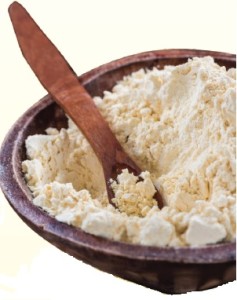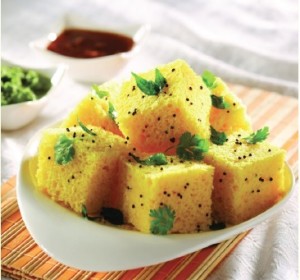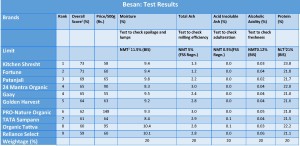June-19: COVER STORY
- Posted by CERC India
- Posted in Jun19
 10 brands of besan tested: Which is the best one?
10 brands of besan tested: Which is the best one?
We use it to make hot pakodas to relish on a rainy day. Or, kadi to accompany khichdi for dinner. No kitchen is complete without a container of besan (gram flour). This versatile and affordable yellow-coloured flour can be used to prepare several wholesome and tasty dishes.
Besan is an important source of macronutrients – 100g of besan contains about 10g dietary fibre, 22g protein and up to 57g of carbohydrates. It is also rich in micronutrients like magnesium, copper, folate and manganese. Besan is made by grinding to a fine powder raw or roasted chickpeas.
We tested ten of the popular brands available in the Indian market to assess the quality of besan being used by consumers today. The tests were carried out as per the Food Safety and Standards (Food Product Standards and Food Additives) Regulation, 2011 (FSS Regn.) and IS: 2400:1976 (Specification for Besan).
It is indeed welcome news for consumers that all the brands of besan proved to be good in terms of fineness, freshness and overall quality. All brands complied with the requirements of FSSA and BIS (Bureau of Indian Standards) standards. None showed adulteration or the presence of artificial colours. The labelling, packing and net weight observations were also adequate as per the law.
Organic brands
The three organic brands tested – PRO-Nature, Organic Tattva and 24 Mantra Organic, which are much costlier than the non-organic brands, did not figure in the top 3. Then, why are consumers being made to pay a hefty price for these brands?
KEY FINDINGS
- The moisture
 content in all the 10 brands were found to be complying with the limit of Not More Than (NMT)11.5% by mass set by the BIS. The results ranged from 8.3% to 10.4%. (See table for detailed results). Higher moisture content may cause lumps and spoilage in besan.
content in all the 10 brands were found to be complying with the limit of Not More Than (NMT)11.5% by mass set by the BIS. The results ranged from 8.3% to 10.4%. (See table for detailed results). Higher moisture content may cause lumps and spoilage in besan.
- All the brands complied with the BIS as well as the FSS Regn. limits for total ash of NMT 3.0% by mass and 5%, respectively. The total ash content ranged from 1.2% to 3.0%.The ash test is used in the milling industry as a measure of milling efficiency.
- All the brands conformed to the BIS and FSS Regn. limits for acid insoluble ash of NMT 0.3% by mass and 0.5%, respectively. A high value of acid insoluble ash suggests the presence of dust, dirt and stones which get mixed during processing or are present in the parent material as an adulterant.
- All the ten brands tested passed the test for alcoholic acidity with results below the BIS limit of 0.12% by mass. Results ranged from 0.02% to 0.06%. Alcoholic acidity of a packaged product is related to its shelf life and freshness. If acidity is higher than the maximum limit, microbes may grow, and contamination of the product may occur reducing the shelf life of the product. The higher the alcoholic acidity, the higher is the rancidity of the product.
- All brands met the minimum requirement for protein of 21% set by BIS. Protein plays an important role in cellular maintenance, growth and functioning of the human body. Besan is a relatively rich source of protein among plant-origin products. Kitchen Shresht scored the highest with 23.8% protein.
- All brands passed the test for fineness. The test requires that 99% of the material should pass through the 500-micron IS test sieve. The fineness of besan affects the quality of the finished products prepared using it.
- None of the brands showed presence of Metanil Yellow. At times, it is added to give besan an attractive colour. It is a non-permitted colour and hazardous to human health.
- None if the brands showed adulteration with Khesari dal (Lathyrus sativus). Khesari dal/flour is inedible but as it looks similar to chana dal, and is cheaper, it is sometimes added to increase the weight of the product by unscrupulous traders. Khesari dal has been known to cause paralysis. Adulteration with Khesari dal is a serious offence.
- None of the brands showed presence of foreign starch. Starch may be added to besan to increase the weight of product. Presence of foreign starch may cause health problems, such as stomach disorders.
- All brands complied with packing and labelling requirements and weight regulations.
Notes:
1The Overall Score was calculated by giving the following weightage – Moisture – 20%, Total Ash – 20%, Acid Insoluble Ash – 20%, Protein – 20% and Alcoholic Acidity – 20%.Colouring agent Metanil Yellow and adulterants Khesari dal and foreign starch, were absent in all brands and hence not considered for rating and ranking. All brands passed in fineness, so this parameter was not included for rating.
2 NMT=Not more than
3NLT = Not less than

Best Buy
With the highest overall score (73) and reasonable price (Rs. 58/500gm) Kitchen Shresht obtained the topmost rank. Our best buy among the 10 brands tested is Kitchen Shresht.
Previous testing
The CERC laboratory had earlier tested 12 brands of besan and two loose samples and the results were published in Insight, March-April 2007. Problems with respect to quality were observed then. Two brands did not comply with the requirement for fineness and three did not conform to alcohol acidity limits, indicating that they were not fresh. Four brands did not meet the protein requirement, one brand was adulterated and the samples of many weighed less than the labelled weight.
Areas of action
- Alcoholic acidity is an important test parameter in ascertaining freshness of the flour. It needs to be mandatorily included in FSSAI standards. BIS standards mention the test, but it is voluntary.
- Packaged foods are safer and less likely to be adulterated or contaminated as compared to loose products. Consumers need to be made aware of this fact so that they purchase packed besan.
- Regular monitoring of loose as well as packaged products by regulatory bodies is necessary to ensure safety and quality.
Consumer tips
- Buy fresh besan (within 1-2 months of its manufacturing date) and store it in a cool and dry place, preferably in an airtight food-grade container.
- Since besan is a good source of nutrition, and relatively inexpensive, it can be made a part of the regular diet, provided one is not allergic to it.
- Consumption of fried snacks and savouries prepared using besan needs to be restricted. The consumption of healthier recipes with minimum fat, salt and sugar should be encouraged.
Grahak Sathi’s conclusion
It is heartening news that the quality of besan has improved substantially over the years, and all the brands meet the standards. However, consumers are being made to pay a premium for organic brands that do not figure among the top three brands. This is evidence that organic products need not be superior to non-organic ones.




